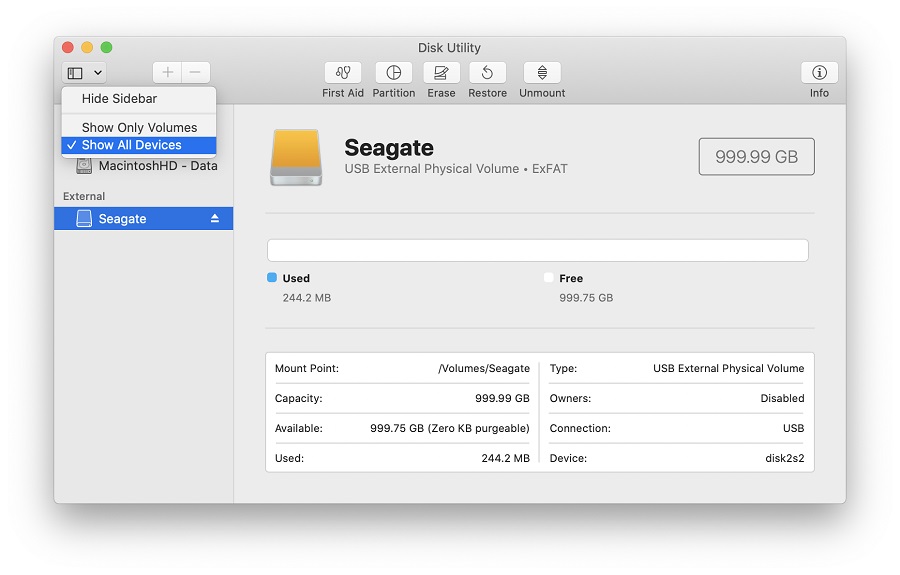

- #FORMAT HARD DRIVE MAC OS JOURNALED FOR MAC#
- #FORMAT HARD DRIVE MAC OS JOURNALED PLUS#
- #FORMAT HARD DRIVE MAC OS JOURNALED WINDOWS#
The fourth important change is the “space sharing” feature available in APFS. In APFS, metadata about the size of different files are stored in a more accessible way, so that the system doesn’t need to examine the metadata of each individual file, one by one, which is how Mac OS Extended operates.Ī third significant advantage of the APFS system is that it stores data more reliably, making it far less common for files to get corrupted due to crashes and power outages. With APFS, there’s also a noticeably faster directory sizing speed due to improvements in the way metadata is stored and managed. However, if later the copy or the original file is changed, both files will still be stored as separate pieces of data, so nothing will be lost, and the end result will be the same as with the Mac OS Extended file system – the only difference would be that the copying process would happen much, much faster. In fact, copy-pasting a file within the same APFS-formatted drive happens almost instantaneously, because, rather than creating an entirely new copy of the file, the APFS system simply points to the same data twice. The first notable improvement is much faster data-copying times. APFS is primarily geared towards SSDs or Solid State Drives and as such, it comes with an array of improvements over the more traditional Mac OS Extended file system used in older Macs.
#FORMAT HARD DRIVE MAC OS JOURNALED FOR MAC#
The APFS file system is optimized for SSD drives and offers a lot of advantages.ĪPFS stands for Apple File System and it is a relatively new file system developed specifically for Mac computers.

About APFSĪPFS is a file system for Mac computers first introduced with macOS 10.13 High Sierra and used in all Macs with SSD drives that have come out since 2017.
#FORMAT HARD DRIVE MAC OS JOURNALED WINDOWS#
One last thing to mention about the Mac OS Extended format is that it isn’t compatible with Windows, so if you want to use a given external drive with both Mac and Windows computers, we do not recommend this format. An HDD can still be formatted to APFS, but it’s recommended to use the Mac OS Extended format for mechanical hard drives (especially if you want to connect those drives to macs with older OS X versions).

This is why it’s strongly recommended to format drives you intend to use with older macOS releases to Mac OS Extended (Journaled).Īlso, note that Mac OS Extended is optimized for mechanical hard drives (HDDs) whereas APFS is specifically created to work well with Solid State Drives (SSDs). Therefore, if, for example, you have an external drive formatted with APFS and a Mac running on macOS El Capitan, your Mac wouldn’t be able to access and read the data stored on the APFS-formatted drive. You see, one of the few problems with the APFS format is that it’s not compatible with macOS releases older than macOS High Sierra. The main reason to still use Mac OS Extended (Journaled) is reverse compatibility.
#FORMAT HARD DRIVE MAC OS JOURNALED PLUS#
However, Mac OS Extended (also known as HFS Plus or HFS+) is still being used and, though it has a lot of disadvantages compared to APFS, there are several reasons why you may want to format a Mac hard drive (external or internal) to this format.

Currently, the APFS file system is the default one in newer Mac models. Since the introduction of the newer, more advanced, and better optimized APFS file system that came with macOS 10.13 High Sierra, the Mac OS Extended (Journaled) format started to get pushed to the sidelines.


 0 kommentar(er)
0 kommentar(er)
